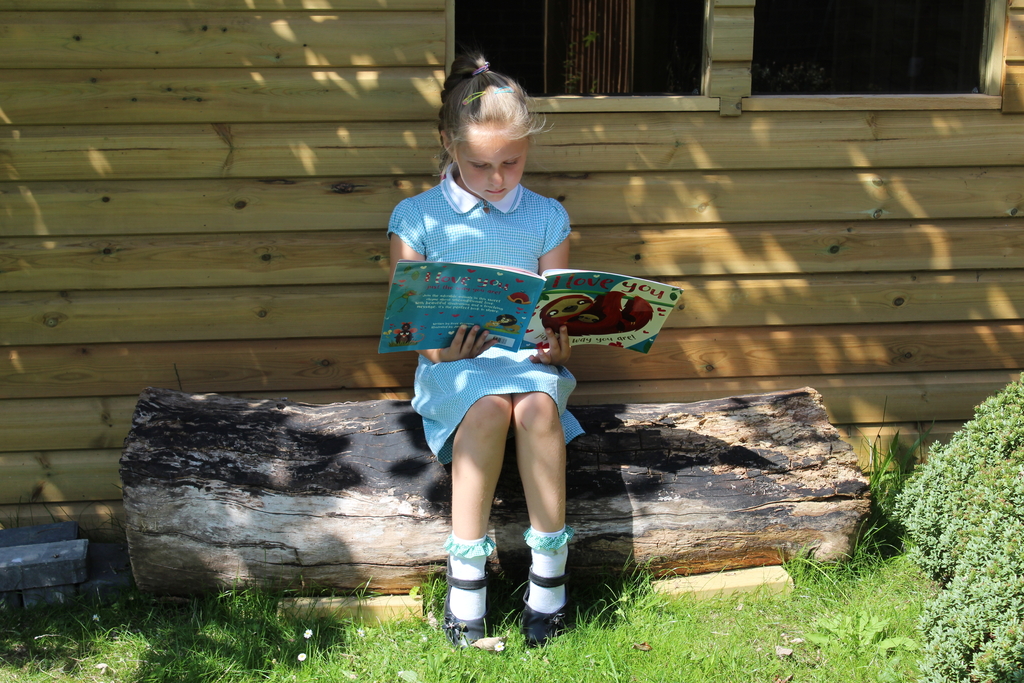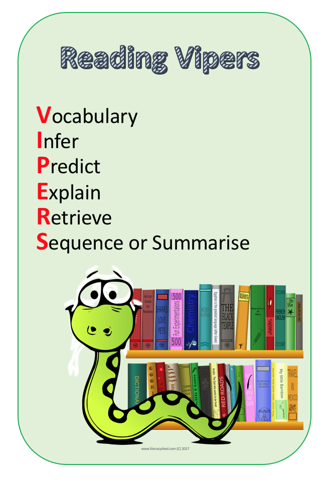English Curriculum
Writing

Intent
At Meadowside Primary School our aim is that every child will learn to write, and love to write, by being given real and exciting materials to inspire them; and by providing them with opportunities to write for different reasons and in different genres and contexts. We aim to provide all pupils at Meadowside with support to write using quality first teaching and clear, well planned progression across all aspects of writing at genre, sentence and word level. We understand that the spoken language, reading and writing are tightly interwoven and therefore we aim to use excellent reading materials and texts as well as examples of high quality writing to inspire pupils and to enable them to emulate these styles which helps pupils understand that their writing is for reading. We also aim to ensure language and vocabulary is built up from our youngest children in EYFS through to end of KS2, using our own school’s version of Talk for Writing in collaboration with our own assessment systems to ensure our children are able to write at the best of their ability. Handwriting is taught and practised across the whole school using the Kinetic Letters programme and we aim for pupils to write autonomously. At Meadowside, we aim for pupils to meet the spelling aims set out in the National Curriculum. In years 2-6 pupils are taught using the Read, Write, Inc. spelling programme. We also recognise the importance of applying writing skills across the wider curriculum and plan regularly for this to take place.
Implementation
Writing Approach
EYFS, KS1 and KS2 utilise quality texts to inform their English activities and lessons. The use of quality texts enhances pupils’ understanding of vocabulary in context, understanding of sentence structure and provide quality models for pupils to utilise. Where possible cross-curricular links are made to embed wider curriculum understanding as well as to meet National Curriculum age related expectations.
In EYFS pupils are provided with daily opportunities to write in their continuous provision, this allows pupils the chance to use their phonic knowledge to write words and simple sentences. Each week pupils have a dedicated writing session led by an adult, this writing is linked to a class text.
Writing happens during English lessons in KS1 as well as forming part of varied contextual responses in other subject areas, such as history, geography, science and RE.
In KS2 pupils are provided with daily opportunities to write. This allows pupils to not only build stamina for writing but to also focus on required grammatical knowledge to produce work at the National Curriculum age related expectation. These writing sessions are not always taught as discrete English lessons and may form part of other subject areas. Written responses form a large part (but are not the entirety) of other subject lessons. When utilised, these provide another context for our pupils to explore their skills and understanding of age-related writing expectations.
Talk for Writing
Each teacher/year group uses the objectives mapped out in the National Curriculum and the EYFS Framework as their foundation point and plans writing lessons using the writing sequence of learning document which provides a yearly overview of the content that should be taught in each year group. We plan our teaching sequence, based on our own version of Talk for Writing as we recognise the importance of speaking and listening, especially oracy, in its ability to support writing. Throughout the school we recognise that language plays an important role in helping pupils understand curriculum content, as it is a vital link to writing. Talk for Writing provides opportunities to develop oracy skills within all our writing teaching sequences and to support pupils’ thinking and organisation of writing. Each Talk for Writing unit uses high quality model texts and the teaching sequences include cold writes, deliberate practice and hot writes. A cold write is used to assess pupils’ knowledge and understanding at the beginning of a unit. During a unit, a teacher carefully plans a sequence of lessons that supports pupils’ to achieve an outcome linked to the National Curriculum. These lessons include deliberate practice and opportunities for pupils to imitate and innovate a high quality example. At the end of a unit a hot write is used to assess pupils’ learning (independent application). Grammar and punctuation is threaded and planned carefully across each teaching sequence and in context of the writing so that children can see the purpose and how it is used.

Handwriting- Kinetic Letters
Meadowside Primary uses the Kinetic Letters programme to provide our children with an automatic response to letter formation that allows pupils to concentrate their effort on the content on their writing. The programme focuses on building physical strength for writing so the sessions have active and interactive elements to inform desired letter formation. Our children are taught the Kinetic Letters approach from EYFS, which supports their understanding of letter families. By the end of KS1 pupils are expected to write fluently with clear letter formation and are beginning to join letters upon entry to KS2. Once our writers have mastered size relative, clear and consistent letter formation and joining, our UKS2 pupils develop their own individual legible style. The training received in earlier years within the Kinetic Letters programme supports children in building a legible style with clarity for their reader.

Read, Write, Inc. Spelling
Spellings are linked directly with phonics teaching for our youngest pupils and years 2-6 are taught using the RWI Spelling programme which fulfils the spelling requirements of the NC and ensure a consistent teaching approach across the school. Pupils will learn to spell with confidence and clarity. These sessions build upon the phonetic knowledge pupils have acquired in EYFS and KS1 and are taught daily using the RWI approach of systematic teaching so the knowledge is continually practised and committed to pupils’ long term memory. As well as practising phonetic based spellings, pupils learn to spell common exception words (red words) that cannot be decoded and teachers support pupils to spell commonly misspelt words (orange words).

Impact
Our intended impact is to meet the aims and rationale set out in our initial intention. We will measure the impact of our implementation against our intention through regular scheduled book scrutiny, formative and summative assessment (against Target Tracker statements) as well as pupil/parent/teacher voice. Subject leaders and SLT will perform pupil progress meetings to analyse and discuss pupil’s learning, progress and attainment against National Curriculum age related expectations.
English : Reading

Intent
The overarching aim for English in the national curriculum is to promote high standards of language and literacy by equipping pupils with a strong command of the spoken and written language, and to develop their love of literature through widespread reading for enjoyment. The national curriculum for English aims to ensure that all pupils:
- read easily, fluently and with good understanding
- develop the habit of reading widely and often, for both pleasure and information
- acquire a wide vocabulary, an understanding of grammar and knowledge of linguistic conventions for reading, writing and spoken language
- appreciate our rich and varied literary heritage
- write clearly, accurately and coherently, adapting their language and style in and for a range of contexts, purposes and audiences
- use discussion in order to learn; they should be able to elaborate and explain clearly their understanding and ideas
- are competent in the arts of speaking and listening, making formal presentations, demonstrating to others and participating in debate
For further information about the Primary National Curriculum for literacy , please follow this link.
Implementation
Individual reading
When pupils at Meadowside are fluent, independent readers they move away from using the Read, Write Inc (RWI) scheme used in the early stages of their reading journey (find out more about RWI on the early reading and phonics page). In Year 1, pupils are moved onto colour banded books and from Year 2 they are moved onto Accelerated Reading books. Accelerated Reader is used from then on throughout the school.
Accelerated reader
Accelerated Reader (AR) is a program whose intent is that pupils enjoy reading more when they can select their own books. (The program has more than 150,000 titles to choose from on its BookFinder list.) Each book has online “reading practice” quizzes, which are referred to as “AR tests.” Teachers use these quizzes to track each pupil’s progress and set appropriate goals for them. It’s intended to encourage pupils to read independently, at their own level and pace.
Pupils are guided with personalised goals around the three factors proven to make reading practice most effective:
- Comprehension
- Quantity
- Complexity
KS2 Whole Class Reading
For the teaching of reading in our KS2 learning environments, we provide four specific reading lessons focused on not only age-related expectations but also on cross curricular opportunities for our pupils to acquire knowledge through text exploration. For our whole class reading (WCR), each year group focuses on whole or text extracts covering a range of genres, these extracts are varied to include fiction, non-fiction, notable people, history themes, geography themes, poetry, science, SMSC themes and more. Opportunities are utilised for individual pupil thinking or response to texts/themes alongside shared discussion and presentation of opinion based on the text with the aim to enhance oracy and vocabulary development. These sessions provide opportunity for all pupils to be heard read by their class teacher weekly to support assessment for learning in the sessions.
During the sessions pupils will have the opportunity to work and read in different ways:
- Vocabulary check - introduces the pupils to new words and checks meaning.
- Quick Start – includes repetitive style questions to encourage a general understanding of texts.
- Individual thinking - encourages independent thinking.
- Partnered talk - encourages discussions, personal views and debate.
- Solo work – opportunities to record their ideas and responses in writing in their reading books.
Each session will also have a VIPERS focus. VIPERS is an acronym to aid the recall of the 6 reading domains as part of the UK’s reading curriculum. They are the key areas which we feel pupils need to know and understand in order to improve their comprehension of texts.
V – Vocabulary
I – Infer
P - Predict
E - Explain
R - Retrieve
S - Sequence (KS1) or Summarise (KS2)
Vocabulary
Pupils are taught to draw upon knowledge of word meanings in order to understand the text. This may also include finding and explaining the meaning of words in the context of what they have read. These conversations are a great way to discover which words pupils know and fill gaps in this knowledge, expanding their own repertoire of vocabulary. For older pupils, they are encouraged to use a dictionary or the internet to find definitions. ‘Vocabulary’ questions might include finding alternative words or discussing which words are the most effective in an extract.
- What does ______ mean?
- Can you tell me another word that means _____?
- Which word tells you that the character is angry?
- Which word tells us something bad is about to happen?
- Which word in this section do you think is the most effective in building the suspense?
Infer
To infer is to find meaning that is not made explicit in the text. Pupils will use their understanding of a wide range of prior experiences to make sense of events in what they see and read. As pupils get more confident, they should start to increasingly back these inferences up with evidence from the text. They may paraphrase or even directly quote to justify what they think.
- Why was the character feeling happy?
- Why did the character run away?
- What kind of person is _____? How does the author show that?
- How can you tell the animal is in pain?
- How can you tell this house has not been looked after?
- How is the character feeling? How do you know that?
- What impression do you get of this setting?
Predict
Pupils are encouraged to predict what they think might happen based on the events so far and details that are implied in the text. The emphasis here is not to necessarily be right – if all books were predictable, that could become very dull – but to engage with the plot and actively think about where the journey of the story might go.
- Look at the cover. What do you think this book will be about?
- What do you think will happen next? What makes you think this?
- Do you think they will be successful in their quest? Why / why not?
- How do you think the character is going to react? Why do you think that?
- Look at the chapter title.
What do you think might happen?
Explain
Pupils are encouraged to explain their preferences, thoughts and opinions about a text. As they get more confident, pupils should also be able to explain themes and patterns across a text as well as why authors have made certain choices and the impact of these on the overall effect of the writing.
- Who is your favourite character? Why?
- Would you like to live in this setting? Why / why not?
- Is there anything you would change about this story?
- How does the author build up the tension here?
- Why do you think the author doesn’t name the villain yet?
- Why has the text been arranged in this way?
Retrieve
This skill concerns finding and recording information located in the text. It tends to cover some of the more straightforward and closed questions that don’t require as much inference (often beginning with who, what, when and where). However, the challenge can lie in pupils having to skim back over large quantities of text. You can support your child by helping them to narrow down sections to search and scan for key words that will help them look for the information they need.
- In what year did the astronauts land on the moon?
- What did the parents decide to name their baby?
- Who was the first character to climb on the boat?
- Give an example of one of the grandmother’s warnings.
- Where did the squirrel hide the food?
- What were the three things Bob was asked to pack?
Sequence / Summarise
Pupils are taught to recap the events of a narrative and put them in order (sequence) or sum them up (summarise). This can be an effective way to remind pupils of the story so far in a longer text or to build familiarity with a shorter book or traditional tale. For younger pupils, the ability to retell a well-known story from their head is an important step in their development and will give them the foundation on which to build their own stories later on.
- How did the story start?
- What happened next?
- Number these events 1 – 5.
- Can you summarise the story so far?
- What happened in the story so far?
- How has the character’s life changed throughout this book?
Encouraging a love of reading
At Meadowside, we want our children to love reading in all its forms. We believe providing children with exciting places to read will help to encourage this ethos.

Meadowside has a beautiful school library, which was completed in May 2021. The school resident artist used inspiration from some of the children’s favourite texts to create a, sensational, colourful and unique setting for our shared books. Pupils have timetabled access to the library and may choose any book, which interests them, they can then take them home. Books are organised by author surname for fiction books and using the Dewey Decimal Classification system for Non-Fiction books.
In Nursery, Reception, Year 1 and Year 2 each class has a designated reading area or book corner. Children have access to these throughout the day. In Key Stage 2 there are reading spaces in the shared areas which children can use throughout the day when appropriate.

Reading events
We hold regular reading events throughout the year, book fairs, book stalls, World Book Day and Creative Mission Days all help to keep reading a key focus of Meadowside Primary School.
Parent Support
Parents play an important role in supporting and promoting positive reading habits. It is expected (as outlined in the school homework policy) that children are given opportunities to read at home. Your child will be responsible for bringing a school reading book home each day. During their homework time it is expected they should read for between 10 and 15 minutes at least four times each week. With younger children, this would need to be with an adult or older sibling who can record their reading in the school reading record. With older more independent readers this may be reading by themselves and then a discussion with an adult about events, information or characters after reading. The child may record their progress in their own reading record. School reading records are checked regularly by staff and can be a useful platform for asking questions about your child’s reading and learning. Please use the records to let teachers know if your child has struggled, asked questions, explained vocabulary or if they have or have not enjoyed the book.
Don’t forget it is still important to read to your child and share books together.
Reading Files

